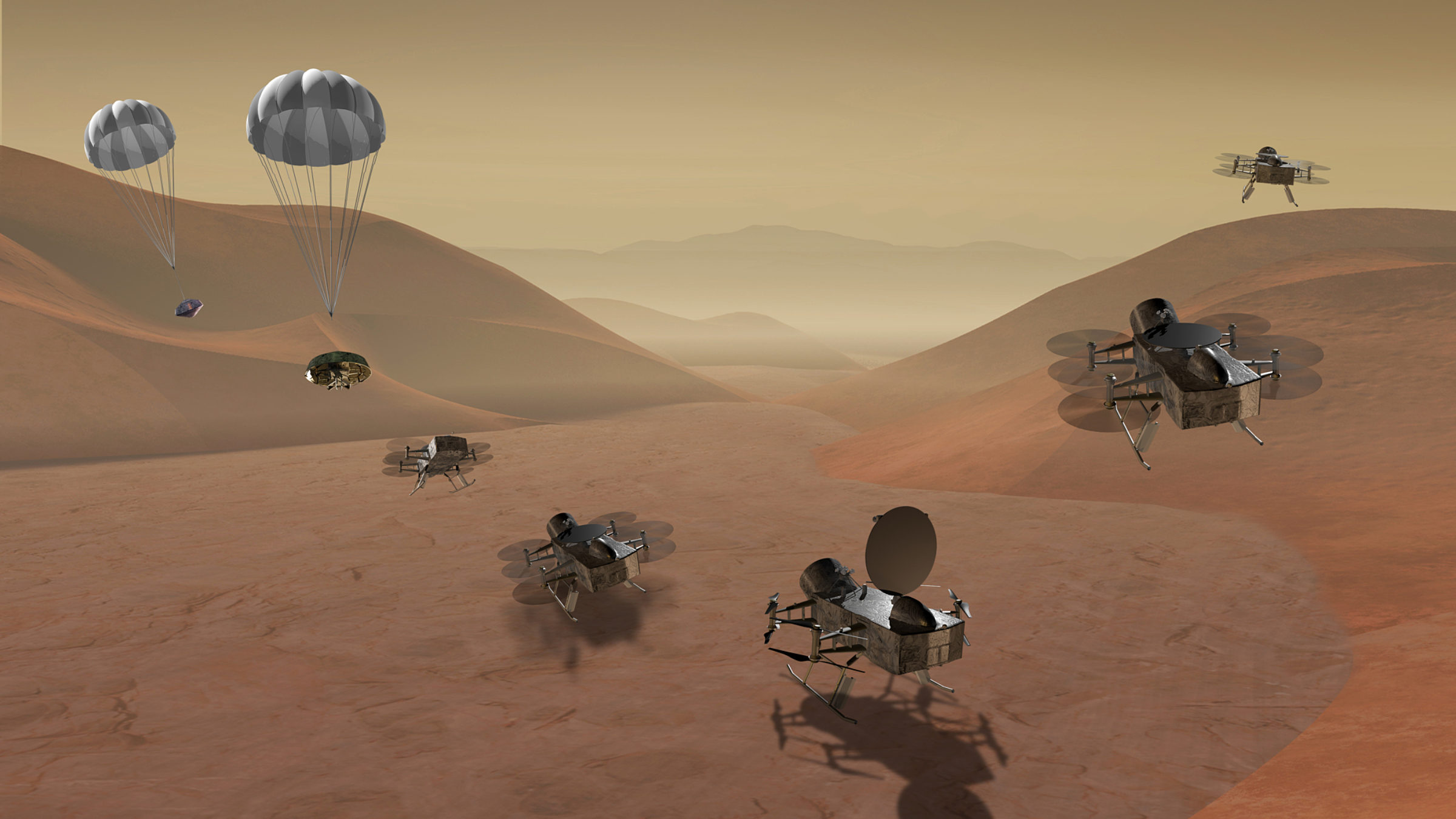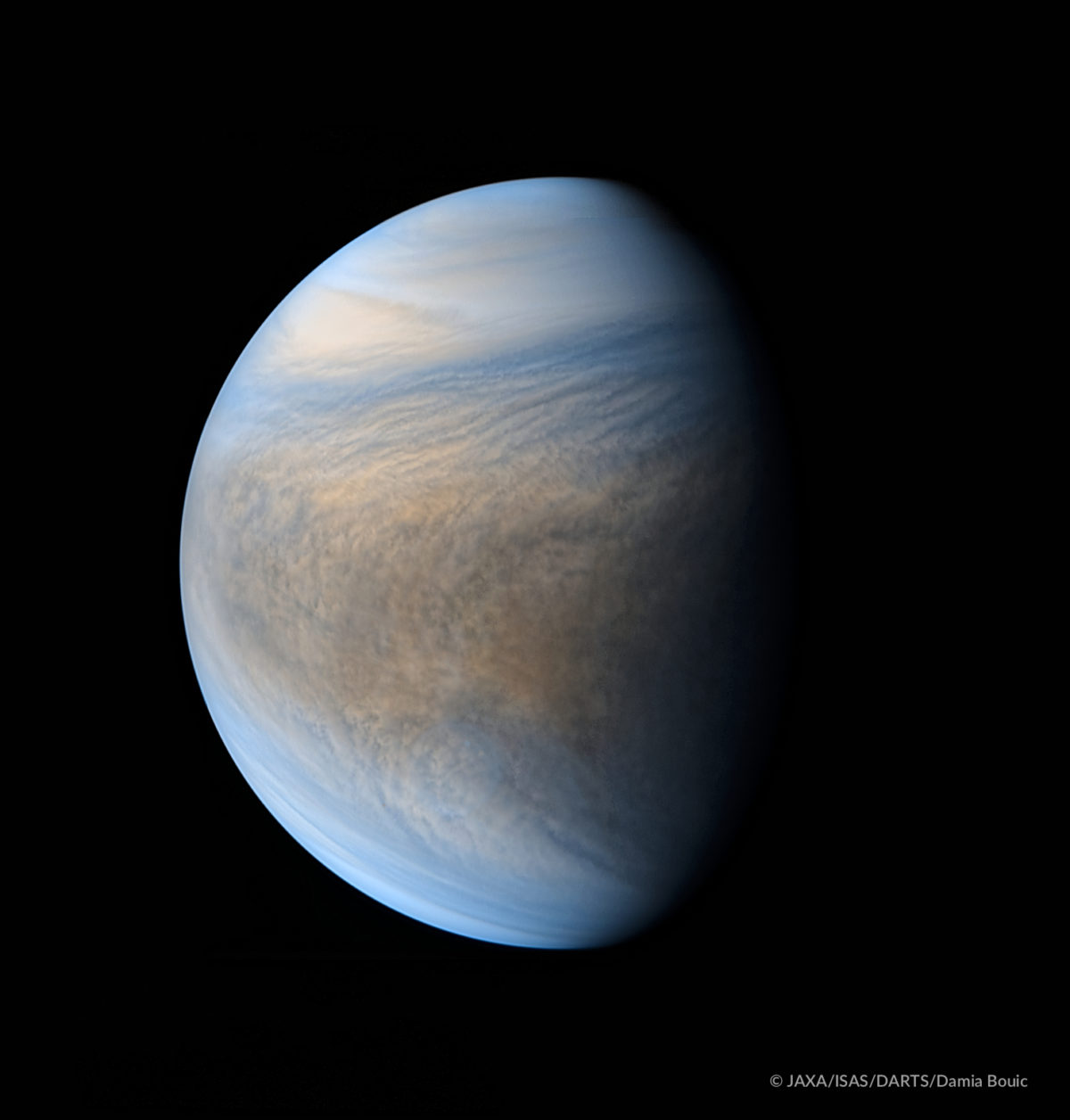Jason Davis • Apr 18, 2018
Recap: Breakthrough Discuss 2018
If you had a spaceship and could take it anywhere in the solar system to search for life, where would you go?
A moderator put this question to a panel last week at Breakthrough Discuss, an annual conference devoted to life beyond Earth and the development of new propulsion technologies. This particular panel included NASA scientists and leading astrobiologists, and the answers to the question were varied: Mars, Europa, Enceladus, Titan, and a chemistry laboratory.
At Mars, there could be life beneath the surface. On Europa and Enceladus, life might exist in the moons' subsurface oceans. Titan has two potential harbors for life: the surface, which has methane lakes, and underground, where there's a water ocean. And finally, right here on Earth, scientists are trying to coax life from primordial soups created in chemistry labs.
Life might be everywhere! Or it might be nowhere. This gives the field of astrobiology an ethereal quality; despite all the possibilities, an answer on whether or not we are alone in the universe continues to slip through our fingers.
Breakthrough Discuss coverage by The Planetary Society, a registered nonprofit organization, was made possible in part thanks to travel funding from Breakthrough Prize.
Some Breakthrough Discuss sessions felt almost like pitches, as scientists outlined compelling reasons to look for life at their destinations of choice. Carolyn Porco, who led the imaging science team for NASA's Cassini mission to Saturn, gave an overview of findings from the moon Enceladus. Enceladus has plumes that spray material from a subsurface ocean out into space; a lot of that material snows back down onto the moon's surface. The ocean has a salinity comparable to Earth, and Porco said "some of us now regard Enceladus as the most promising place in the solar system to search for life."
She wants to go back, preferably with a lander that would collect plume material falling back to the surface. If that's too ambitious, she suggests either an orbiter or slow flyby probe, so long as the spacecraft goes slow enough not to smush potential microorganisms like bugs on a car windshield. She believes any Enceladus mission should include a microscope that can capture images or video of potential life.
David Grinspoon, a senior scientist for the Planetary Science Institute, represented Team Venus, which lost out yet again this year in NASA's most recent competitively selected mission call. Venus may have once been habitable; current research puts liquid water on the surface about 2 billion years ago.
Grinspoon talked about the intriguing possibility that microbial life could exist in Venus's clouds. Before Grinspoon's talk, David Smith, an astrobiologist at NASA's Ames Research Center, talked about microbial matter that gets swept from Earth's surface up into the clouds. Smith is part of a team trying to figure out what those tiny lifeforms do up there: Do they propagate before fluttering back to Earth? Or are they ripped apart by ultraviolet radiation?
Smith's research is relevant because something similar could be happening at Venus. Since we don't expect to find life as we know it on Venus' surface, any cloud life there would have to be self-sustaining. Fortunately, unlike on Earth, there may be places in Venus's clouds where heat welling up from the surface keeps particles aloft indefinitely. More intriguingly, something in Venus' atmosphere is absorbing more than half the solar energy hitting the planet. Could it be a biological process? The idea has been floated—ha!—but Grinspoon warned there are other explanations, too. What we really need are some samples. Venus is underexplored," he said.
One of the destinations that beat out Venus in the above-mentioned mission selection round was Titan. Morgan Cable is part of the NASA team working on the proposed Dragonfly mission, which would explore Saturn's haze-covered moon using a dual-quadcopter that could fly hundreds of kilometers during a 2-year mission. Life as we know it needs three things, Cable said: energy, organics, and solvents (liquids, basically). Titan offers a two-for-one on solvents because it has methane lakes and a subsurface ocean.
The idea of sending a drone to Titan may seem far-out, but the dense air and low gravity there make flying easy. Even a human with makeshift wings might be able to fly on Titan. "I want to remind people that NASA dares mighty things," said Cable.

As tends to happen when people talk about searching for life beyond Earth, panelists at Breakthrough Discuss also explored what life actually is. Is there a universal chemical definition? Sara Seager, an MIT astrobiologist serving as the deputy science director for NASA's TESS exoplanet mission, is creating a database of life-bearing compounds; essentially, she is trying to figure out why life on Earth chose certain chemical bonds and not others.
But how do you define life beyond its constituent chemicals? Penelope Boston, director of the NASA Astrobiology Institute, noted that "life isn't a bag of suspiciously complicated chemicals. It's those chemicals doing things over time."
What things must they do? From the audience, Jim Green, NASA's newly minted NASA chief scientist, pointed out that on Earth, life metabolizes, divides, and evolves. Can we assume that behavior is universal? From there, the discussion got even more philosophical, touching on Jeff Goldblum's "life finds a way" quote from Jurassic Park, and ending with a thought experiment on whether or not Q from Star Trek fits a traditional definition of aliveness.
Sci-fi is a helpful tool when considering some of the questions raised at Breakthrough Discuss. During a keynote speech on day two, cosmologist and astrophysicist Martin Rees said he often tells students it is better to read first-rate science fiction than second-rate science. This set the stage for some talks on new forms of space propulsion, with the key question being: were some of these proposals better off left in the realm of science fiction?
To a casual observer like me, it was hard to tell. Sonny White, a NASA engineer behind the controversial Em Drive, gave a dense presentation on a "quantum vacuum thruster" concept before being attacked by astrophysicists in the audience. Entrepreneur Ryan Weed discussed his company's efforts to create on-demand positrons as an alternative to hard-to-store antimatter. And staunch Mars advocate Robert Zubrin presented his new "dipole drive" that harnesses the power of the solar wind.
There were also sails: Solar sails! Laser sails! Electric sails! Of all these future sail technologies, the first to get a chance to prove its worth will be solar sailing, including, of course, The Planetary Society's LightSail 2 spacecraft. Les Johnson of NASA's Marshall Space Flight Center gave an update on NEA Scout, the solar sail launching as a secondary payload on the Space Launch System's first flight. Separately, Johnson told me the project is on schedule with no major problems in the way; his team has a final full-scale deployment test scheduled for April 26. Johnson also showed off a roadmap of future sail projects he hopes to oversee, and told the Breakthrough crowd he has been encouraged by the progress of electric sail concepts.

Last year, Yuri Milner, the benefactor behind all the various Breakthrough efforts, said he was considering a private, robotic mission to Enceladus. There was no public update to that mission at the conference, but one source I spoke with said other destinations are also being considered, including Venus. Breakthrough could potentially team up with NASA on a public-private partnership in which Breakthrough funds the construction of a satellite and NASA contributes an instrument and conducts operations. However, no framework for this type of partnership currently exists.
Breakthrough Listen, which conducts SETI research, appears to be making good progress with its observations, according to an update from UC Berkeley's Emilio Enriquez. The biggest takeaway for me was that the team seems to have worked out the bugs in using the mutlibeam receiver at Parkes Observatory in Australia, which will let them observe more of the sky at once. One fun bit of synchronicity: I met a radio astronomer from the Netherlands, and she uses Breakthrough Listen data to search for fast radio bursts, or FRBs. I wrote about this unique use of SETI data in a feature story last year, so I was happy to organically meet an astronomer who takes advantage of this massive, free data set!
And finally, what about Breakthrough Starshot, the project hoping to send a fleet of tiny solar sails to Alpha Centauri? It's still happening, but at a slow pace, as you might have expected. One person who works on the project told me that any single component required to make Starshot happen can be seen as a long pole in the tent—especially the array of ultra-powerful lasers that would zap the sails and send them hurtling to Alpha Centauri at relativistic speeds.
In addition to Breakthrough's investments in some of these technologies, NASA pitches in, too, via the advanced innovative concepts program, or NAIC. Is it worth it? Absolutely, said Jim Green, the NASA chief scientist, and John Grunsfeld, the former NASA astronaut and science division director, during an open discussion on the final day. Grunsfeld noted that the Curiosity rover on Mars has a suite of science instruments that might have filled entire rooms when he was a graduate student. Sometimes, small space science investments pay off big.
The Time is Now.
As a Planetary Defender, you’re part of our mission to decrease the risk of Earth being hit by an asteroid or comet.
Donate Today

 Explore Worlds
Explore Worlds Find Life
Find Life Defend Earth
Defend Earth

